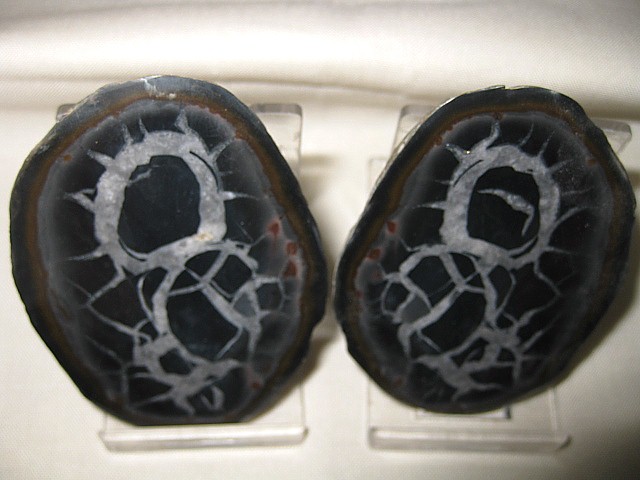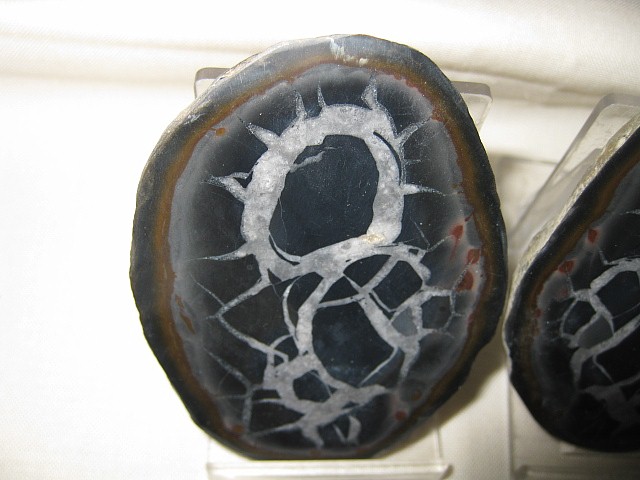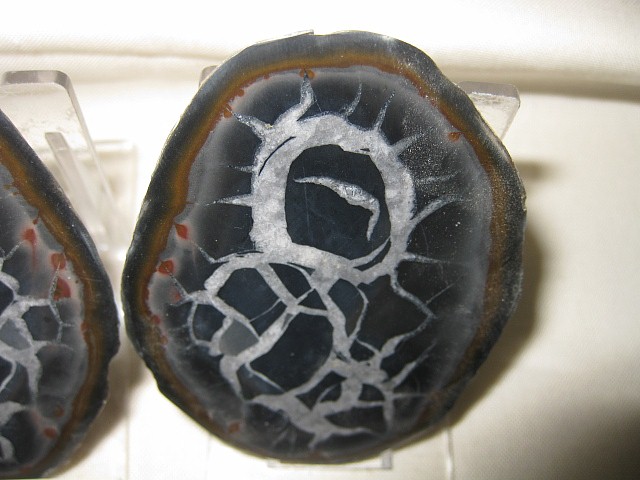Description
- Septarian Sliced & Polished Pair
- Cretaceous Age
- Morocco, North Africa
- Each half measures approx. 2 11/16″ long. You get BOTH halves
Septarians were formed during the Cretaceous period, 50 to 70 million years ago. Decomposing sea life killed by volcanic eruptions, had a chemical attraction for the sediment around them, forming mud balls. As the ocean receded, the balls were left to dry and crack. Because of their bentonite content they also shrank at the same time trapping the cracks inside. As decomposed calcite from the shells was carried down into the cracks in the mud balls, calcite crystals formed. A thin wall of calcite was transformed into aragonite separating the bentonite heavy clay exteriors from the calcite centers. Because of this, the nodules are called septarians.
The name Septarian is derived from the Latin name, Septem, meaning seven. This relates to the fact that the original mud balls found were cracked with 7 points in every direction, thereby creating the beautiful design.
Septarians are composed of Calcite (The Yellow Centers), Aragonite (The Brown Lines) and the Outer Grey Rock is Limestone. Occasionally the fossil or some of the fossils which started the formation of the rock is noticeable in the rock.







